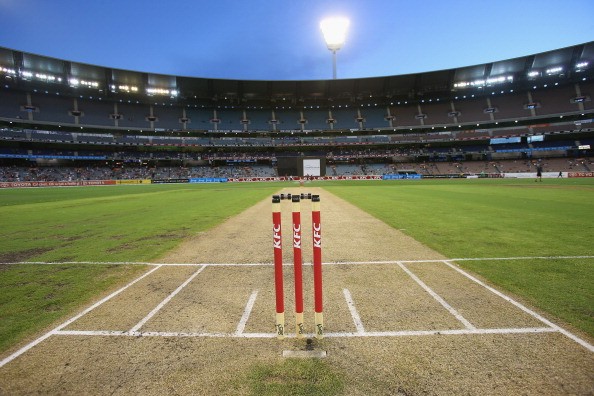The Gentleman’s game of cricket is based on poise, temperament, the cricket equipment you use, and of course a great amount of skill, precision and patience. At the highest level however, there are a range of conditions to contend with, from the qualities of the opposition and the location of the test match. With England cricket touring the subcontinent this winter, here we look at those cricket pitches that are most suited to spin bowlers.
The Sub Continent and Sri Lanka
There’s an immediate reason why the cricket pitches in the Indian sub-continent and Sri Lanka are different to those in England and other parts of the world, the soil. The soil itself is dustier and means that the wickets are crumbly. When you look at the wicket, the soil is made of clay, which due to the extreme hot temperatures in that part of the world, crack as the wicket expands and dries out. All of the moisture evaporates from the surface and over time the cracks in the wicket will get wider and wider.
If the soil of a wicket area is made of clay, or a lot of clay, the pitch is likely to crack, no matter the location. The temperatures and climate on the sub continent ensure that it is a lot worse than anywhere else. This is because of the compactness of the soil compared to English soil for instance, leading to more air and water into the pitch, slowing it down and preventing fast bowlers from reaching their accurate top speeds that they’re looking for.
It is for these reasons that the pitches in Sri Lanka and the Indian sub continent are more suited to spin bowlers than fast bowlers.
How Spin Works Better on a Cracked Surface
For spin bowlers in Sri Lanka, India, Bangladesh or Pakistan, they are aiming for the cricket ball to pitch in a crack on the surface. If this happens the ball is much more likely to spin than if it lands where there isn’t a crack in the surface. As there is no pace on the wickets in this part of the world it often means the batsman will have to reach forward to attempt to strike the ball, leaving them vulnerable. As a test match goes into later days, the wicket area will get worse and worse through natural wear and tear of the match ball, as well as the temperatures and cracks getting wider in the soil. In England, the difference would be that the pitch worsens due to fast bowler’s following through.
The particular challenges of the sub continent in terms of temperature, humidity, the capacity of the pitches to rapidly deteriorate and leave large cracks on the wicket, make it a difficult place for touring teams to visit. From the lush greens of England where fast bowlers are king, learning to bat against spin is a minefield. Being fully prepared in the cricket equipment used, the training and positive mind-set is the best process towards achieving success on pitches suited to spin bowling.

